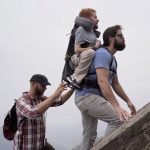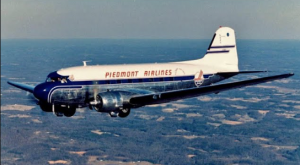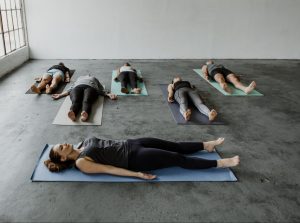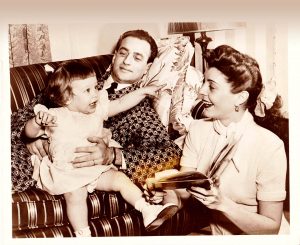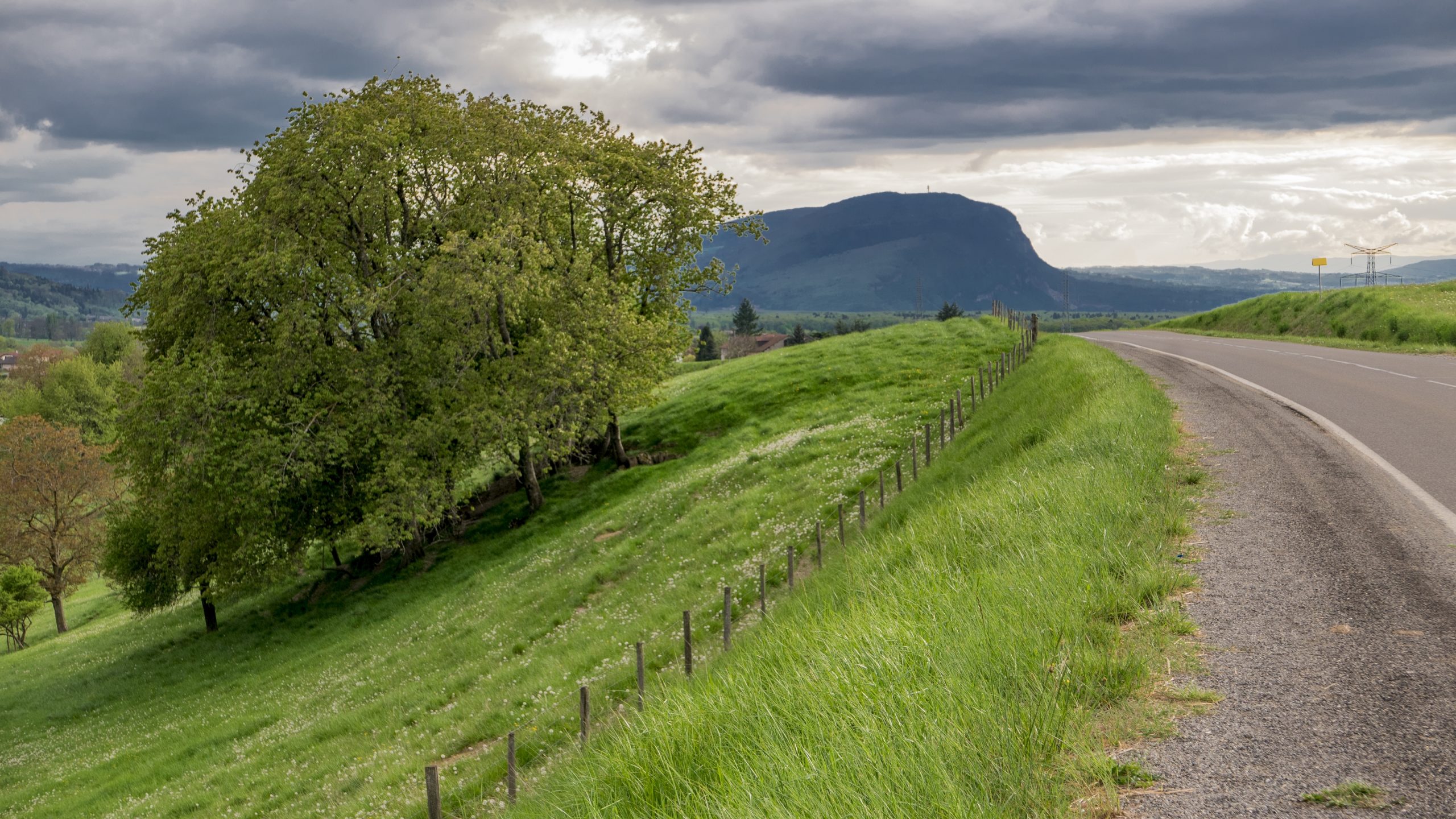
The Roadshow
Spending Time and Miles on the Backroads
By Jim Dodson
Owing to heavy end-of-summer traffic, I took several back roads on a recent trip from Wilmington to Greensboro, and then on home to the Sandhills.
The drive probably took an hour longer than necessary. But more and more these days I find it’s the back roads of this state that make the journey more appealing than the prospect of a timely arrival.
Besides, given a choice, part of me will always take the quieter road home or the forgotten highway wherever I’m bound because that’s where — with apologies to Chevrolet — you still see the beating heart of America.
When America’s Interstate Highway System debuted with much fanfare in 1956 — authorized by an act of Congress and officially called the Dwight. D. Eisenhower System of Interstate and Defense Highways — it was hailed not only as the most revolutionary innovation in modern times but the most ambitious public works project in human history.
The system proved to be every bit of that and more — shaping everything from the way America went on vacation to the way goods and services were delivered cheaply and in unprecedented time, a boon to big business and a nation suddenly in a hurry to get someplace else at the dawn of the modern automobile age.
Today, sixty years later, now boasting more than 46,800 miles of super highway with legal speeds in places topping 80 mph, our aging Interstate system is still adding roads and often held up as a model of America’s postwar engineering ingenuity, widely credited with bringing goods and services to rural portions of the country and spreading commerce — and popular culture — into the nation’s backwaters, creating prosperous towns and cities where there was formerly only prairie or small towns adrift in time. Some historians, in fact, go so far as to credit Interstate culture with narrowing the regional differences between formerly hostile sections of the nation — easing ethnic and racial tensions along the way, the theory goes, to say nothing of homogenizing the nature of modern car travel.
Maybe this is so.
Maybe, on the other hand, this homogeneity and national worship of speed and efficiency explains why I’m so naturally wary of Interstates in general and addicted to back roads and forgotten highways in particular — because I’m old enough to remember when there were no Interstates, per se, at least in the parts of the rural South where my family did most of its traveling. Going somewhere in a car was still an adventure in those days, still took time to do it and almost always offered something different and often surprising — a shaded historic picnic ground by a stream? An old-fashioned tent revival in progress? An old-timer in faded overalls selling watermelons from the bed of a rusted pickup? All . . . just around the next big curve or over the hill. Road travel then was magic.
By their very definition, Interstates don’t have much magic, big curves or even hills to speak of. By careful design, you see very little of the world at large from them. They carry travelers in starkly efficient straight lines from point A to point B, minimizing the need to toil anyplace along the way — the very reason, in fact, why every neon outpost with golden arches and motels where you briefly exit to gas up looks eerily like the ones you saw ten hours and two state lines ago.
Perhaps my first and most vivid memory of life was a road trip nobody in our family wished to take. It happened on a cool November evening in 1957 after my father said goodbye to a handful of employees who worked for him at the small weekly newspaper he owned for a while in Mississippi. Owing to a partner who’d cleaned out the company accounts and vanished to parts unknown, reportedly with a cigarette girl from a Gulfport hotel, the paper had been forced to close down.
My father’s dream was ashes and we were “starting over” someplace else, though I had no way of understanding where or what exactly this meant — merely that our furniture had been sent on a truck ahead of us and we were having to leave sleepy Gulfport in our family’s two-toned Pontiac Star Chief, heading east into the darkness to a place called Wilmington, where my father had a new job waiting at the newspaper.
Maybe I’ve heard this story so many times I simply see all of this playing in my head like an old home movie. I was almost five years old, after all. My brother Dickie was already six. We had a Cocker Spaniel named Amber. Our mother had just suffered a miscarriage. It was twilight and we watched from the back seat of the car as our father shook hands with the five or six folks who worked for him and slipped them a small white envelope. Inside — I learned this from my mother three decades later — was the last of his own personal savings. The elderly black man who worked on the paper’s loading dock — supposedly one of the best blues rhythm guitarists between Mobile and New Orleans — gave me a harmonica for the trip. Everyone called him “Pops.” I never knew his real name. He had a glass eye and a bright gold tooth.
We waved goodbye and turned on the two-lane state road leading out of town, eventually running out of street lights. Our mother, who was still pale from her stay in the hospital, leaned her head against our father’s shoulder. He tuned up a radio station out of Jackson playing Nat King Cole.
“You boys get comfortable,” he said quietly over his shoulder. “It’s a long ride. Maybe we’ll have breakfast in the Blue Ridge Mountains.”
I hated to leave Mississippi but I was eager to see mountains of any kind, especially if they were blue. The night felt oceanic, scary and thrilling. My brother had his side of the Star Chief’s big back seat and I had mine. He warned me not to play my harmonica or cross into his side of the seat.
My first glimpse of the mountains came at dawn, when we stopped for pancakes at a crowded diner somewhere outside Chattanooga next to a stand selling “Genuine Cherokee Indian moccasins.” The placemats were a map of the entire United States you could color, and our parents let my brother and me buy a pair of those moccasins. Later, we stopped for a picnic on an overlook somewhere around Asheville. In the distance, the hills were indeed a milky blue. The air, I remember, was crisp and cold.
Over the next ten or twelve hours the drive to the coast took us down a winding road from the mountains through smaller hills and on through the rolling Piedmont into much flatter country, through small towns with sleepy courthouse squares, past Esso and Sinclair stations, past harvested fields and sleeping barns and farm stands already closed up for the season, roadside churches, cemeteries, VFW halls, a drive-in theater, and a dairy bar or two, where we finally stopped in late afternoon for an ice cream cone.
When I think back to that pivotal road trip in the life of my family, I realize something potent must have gotten into my bloodstream about small towns and back roads.
For it’s the rarest of back roads I’ve happened upon in forty-plus years of driving that I didn’t seriously consider taking instead of the ubiquitous Interstate highways and even more ambitious super tollways that now cinch suburban America’s landscape like a corset. As urban America expands, highways and country lanes sometimes seem like an endangered species.
This is why, given the choice recently to get home before dark via a mindless Interstate or meander along a quieter road at the whim of nature and pure serendipity, I chose the road not taken much anymore.
And like Robert Frost in his golden wood where two roads diverged, one of the first poems I ever memorized, this once again made all the difference.
Passing through a green-gold swamp, I saw a pair of snowy egrets sitting on a fallen branch over a blackwater pool, discussing world affairs while they waited for their evening supper.
Through the open window of the car I caught whiffs of summer’s last honeysuckle, just-cut hayfields, the dank smell of woods and streams, and wood smoke from a woman burning raked-up magnolia leaves and sticks in her yard.
I saw the first chevron of geese heading south for the winter.
A farmer waved to me from the seat of his tractor, chatting on his mobile phone.
Somewhere around Spivey’s Corner I pulled off in a fierce thunderstorm to buy fresh-picked silver queen corn, vine-grown Big Boy tomatoes and a paper sack of what my late Southern grandmother called “Florida butter beans,” large creamy white affairs speckled with bits of burgundy.
On I rambled past a wooden freewill Baptist church with a sign out front that read “Forbidden Fruit Makes Many Jams.”
I saw a beautiful cemetery under ancient oaks, several fields of grazing cows, a spray of flowers attached to a banged-up tree, a high school athletic field where a football team was ending its first practice of the season.
Somewhere around Campbell College, where the sun was out again but sinking fast, I passed four teenagers in a long line at the Dairy Queen. Two were holding hands. The other two were eating sundaes and laughing. The girls were shockingly under-dressed — or so my late Granny Taylor would have said. Date night in the slow lanes of America.
“How was your drive?” my wife asked when I finally got home around nine. She was watching a movie.
“Just the way I like it,” I said.
“I figured that’s why you were late,” she said. “You took the back road home again.”
Reprinted with permission from the September issue of PineStraw Magazine.

